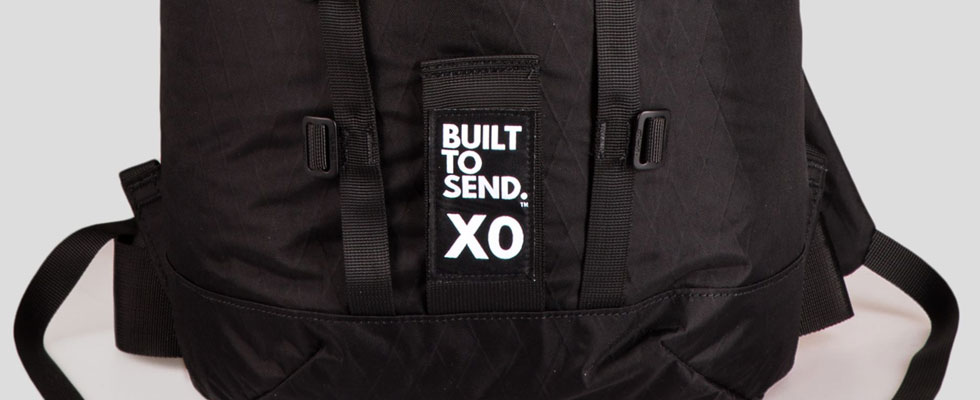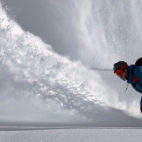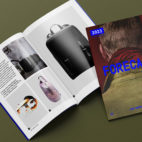5 Reasons Why BUILT TO SEND Should Be on Your Radar
Lasers, rocket engineering, 3D printers, F-16 fighter jets…..we are talking about bags here, right?
You may not know British pack makers BUILT TO SEND yet, but you should. Everything Built To Send does is focused on achieving engineering perfection and they may well get there; with three PhD level engineers on their team and extensive experience in aerospace, automotive and rocket engineering – to say they are well suited to the task of building a bomber bag is starting to sound like an understatement.
The magic happens in a converted stable block in Devon, in Great Britain, but the whole operation is run like an aerospace build line rather than a sewing shop and everything that happens on the BTS assembly line is monitored and meets ISO 9001 quality standards (the international standard for quality control). These guys probably don’t sleep much, and if they do, they are dreaming about bags.
Here’s five reasons why they should be on your radar.
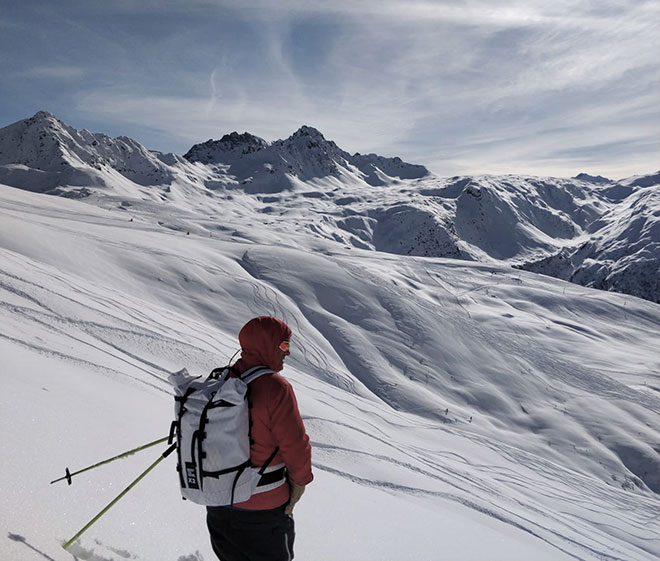
Evidence-Based Pack Making
The Built To Send team has about sixty combined years of alpine mountaineering, climbing and backcountry experience, and enough time in the greater ranges and on big walls to know what works and what doesn’t but they aren’t working in a vacuum; BTS also draws inspiration and massive amounts of real-world field research data from a team of world-class climbers doing serious things in remote places. Mountain guides putting in endless days on hard routes in the Alps, climbers doing first ascents on inaccessible big walls, and extreme free-skiers on heli-skiing expeditions to places like Baffin Island….they even have some expeditions lined up for high-latitude testing in the Arctic.
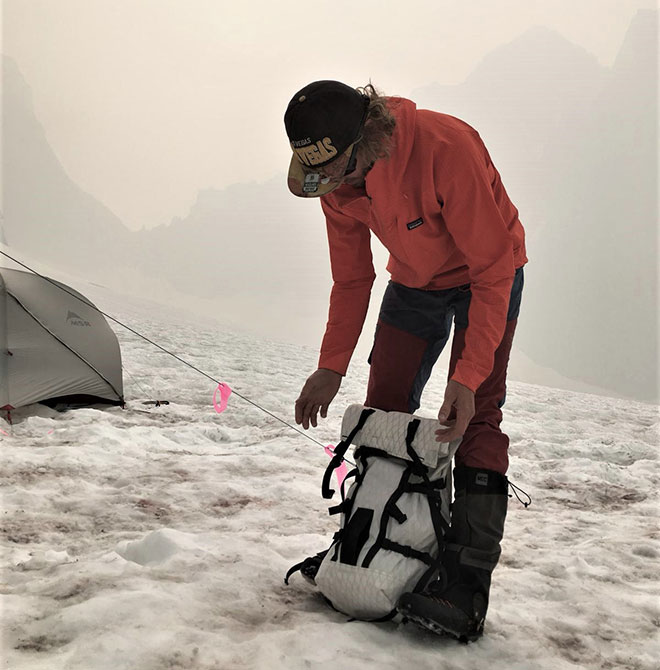
Every time the engineers at BTS head out into the wild they aren’t just tackling adventures, they are asking questions. Each component on Built To Sends packs speaks to those many years and thousands of field hours of user data, but also countless failures.
With 3 PhDs between them and with something like 8 bazillion miles of cliffs climbed and big walls conquered, the research and engineering team at BTS are looking for evidence in every experience. Out in the field, a broken buckle or a tattered shoulder strap is really an incubator for expanding the limits of what’s possible in pack building. These packs are born in the wild and with each adventure a fabric’s durability is considered, seams are reduced, buckles change from plastic to anodized aluminum.
“With three PhD level engineers on their team and extensive experience in aerospace, automotive and rocket engineering, to say they are well suited to the task of building a bomber bag is starting to sound like an understatement.”
By taking the ‘evidence based’ approach to pack making, Built To Send isn’t just building bomber bags, they are fighting back against a lot of the over-the-top marketing claims that pack makers make to sell packs, but can’t always back up in the field. The team even keeps a private catalogue of some of the most wild and ridiculous claims that some bag makers are making as inspiration; nothing leaves the BTS “engineering bunker” without real-world, field researched evidence to back it up.
An obsession with detail
These guys are obsessive and it shows. Built To Send is working towards a sort of pack-making nirvana: stripping away unnecessary parts and features that yield a leaner, more versatile template to play with. You can dial-in this bag with their modular system to meet your exact needs, or strip the bag back to an ultralight, ultraminimal sack for days on the hill or short summit pushes. There are 22 pieces of super light aluminum hardware on their larger packs, and each has been placed with a targeted, purpose-built goal in mind which underscores the obsessive attention to every inch and ounce that this pack has received.
When BTS talks about the strength-to-weight ratio on their packs, they are talking about one of the best in the business; you should be able to handle 20kg of gear in this bag without issue but that is because they tore through too many shoulder strap prototypes on the way to perfecting their attachment points. The design iterations are piling up over there like mashed potato mountains.
From the X-Pac VX42 fabric to innovative construction techniques, they have considered and obsessed over every detail to make these packs some of the strongest on the market. The almost invincible aluminum buckles are strategically placed to make the pack entirely modular and incredibly durable.
Check out this 500x zoom on a seam slicing through their X-Pac VX42 fabric. How many pack makers do you know that own one, let alone several laboratory-grade microscopes to check seam quality.
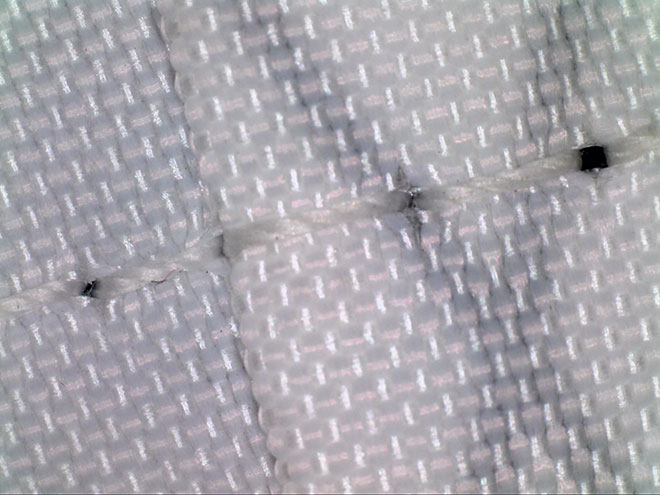
The Built To Send team is as obsessed with the details and what’s left off is just as important as what’s left on. The “monoshell’ makes it seamless, there are no extra pockets clogging up the pack, inside or out, and in minimal mode the pack becomes a heavy-duty haul bag thanks to the clever ‘x-fold’ design, the full strength top band, and the lack of extraneous hardware.
“You can dial-in this bag with their modular system to meet your exact needs, or strip the bag back to an ultralight, ultraminimal sack for days on the hill or short summit pushes.”
These packs sort of exist in a state of constant improvement and the bags highlight a beautiful blend of considered engineering, high-grade composite fabrics, and aerospace-grade aluminum hardware that speaks to the obsessively detail-oriented approach to bag building that the team at BTS is refining with every pack.
Hardware and Materials
After all that time spent obsessing over material and hardware and construction, what has this team of big wall-conquering, rocket launching bag makers decided to use in the construction of their packs? As you would imagine, only the best. The outer fabric, the only fabric used on the pack, is X-Pac VX42 fabric made by Dimension-Polyant. X-Pac VX 42 is a high tenacity laminate fabric with a 420D ripstop polyester backing. If you have a bag made of X-Pac in your closet right now, it’s likely made of X-Pac VX21 with a 210D polyester backing which is, by all accounts, a superb pack fabric, but the team at BTS chose the VX42 for its superior abrasion resistance and durability without a real weight penalty. For folks who only carry a sawed-off toothbrush and a poncho into the wild, no pack will ever be light enough, but these Built To Send Expedition series packs are ultralight for the rest of us and they’re thirsty for some real-world abuse.
The black X-Ply cutting across the plane of the fabric at 22° gives their VX42 expedition-grade fabric enormous structure and makes tearing through it harder than stuffing a Samsonite into a sandwich bag. These packs are also built with an innovative “Monoshell construction” (more on that in a minute) sewn through with triple-stitched seams and virtually indestructible V92 4oz. polyester thread.
The color palette on these packs is limited and originally you could only get these packs in white….yet that too reflects the focus on function that the BTS team are dedicated to. The team went back and forth for 6 months before they decided to offer a black version of their Expedition series packs. Why? Because the translucent dye which turns the white VX42 X-Pac into black X-Pac would add a whopping 0.025 kg of weight to the bag….did I mention obsession? Now, you can get the packs in both Black and White. And while the black X-Pac Expedition series remains ultralight, BTS is careful to mention the weight increase for the black version on the website. You won’t find any bro-camo or natural fiber limited editions here but you will find purpose-built fabric that does what it says on the tin.
You like metal, kids? Well, BTS does too. Custom engineered (did I mention these guys play with rockets) aerospace-grade aluminum buckles cover the pack, and not just in some places. Every buckle. Everywhere. BTS takes as many steps as possible to reduce the risk of breakage, and thus total pack failure, by over-engineering every stress point and triple-checking each material consideration. The Engineering team experimented with a bevy of straight-to-market tri-glides, buckles and hardware and ultimately, if you want something done right… So BTS set out to design their own. Some ten design iterations later they had the crazy durable, anodized aluminum hardware their obsessive engineering brains had once only dreamt of.
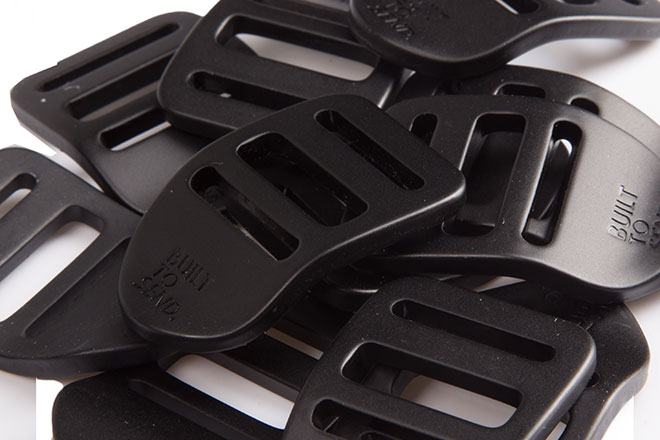
Even the proprietary 11mm foam which lines the straps and the back panel is over-built. Designed and developed based on the foam used in F16 fighter pilot ejector seats, it has incredibly high shock absorption and maybe even more importantly, super-high impact recovery; your straps won’t compress and thin out over time on these packs in the same way you’re used to, but maybe all I had to say was F16…
The thing is, when you’re clinging to a cliff face or trekking up the side of an iced-over slope with all your life-saving essentials on your back, the last thing you can afford is equipment failure. Every buckle, every piece of hardware on these BTS packs is ready for space flight so they should damn well serve you crag-side.
Mmm that ‘Monoshell’
Staying true to form, BTS couldn’t settle for traditional pack making techniques. Any hint at the need to improve a feature and the obsessives at BTS go to work tweaking and re-tweaking the recipe until they get it just exactly right. The first major engineering innovation, the one that may come to define their packs going forward, was the development of a new construction technique they call “monoshell construction”. In demanding environments, a lot of mass-produced packs fail at the seams. Either the stitching wears through from general abuse, or the stitching tears through the fabric leaving a hole. And most packs have a lot of unnecessary seams. Designers like a lot of seams because they can play with different colored elements on the pack, and because you get less material wastage when you repeat a single shape without gaps, or overlap the smaller parts onto the fabric during cutting.
BTS sees EVERY seam as a potential failure point. So what did they do? Take out the seams entirely. BUILT TO SEND X-Series packs are the only packs in the world in which the entire body is made from a single piece of fabric. That’s your monoshell construction right there. The complete absence of seams also means the inside and outside of the bag are super clean, with fewer spots to catch on rock or gear, or to collect dirt. The front, back, sides, and base are literally one contiguous piece of fabric. Their textile of choice is of course bomber X-Pac VX42 expedition-grade fabric so the only way of breaking one of these packs is to rip through this fabric itself, and that is essentially impossible, even with a nice sharp axe blade. BTS says their packs are the strongest ultralight packs in the world, and probably the strongest packs of any sort, even in non-ultralight categories…hard to argue with evidence-based pack making like this.
“BTS sees EVERY seam as a potential failure point. So what did they do? Take out the seams entirely. BUILT TO SEND X-Series packs are the only packs in the world in which the entire body is made from a single piece of fabric.”
Versatile for every adventure
BUILT TO SEND X-Series packs were designed for alpine climbing, big wall climbing and ultralight backpacking. The engineering constraint for all these activities is the same: the packs have to be optimised for the highest possible strength-to-weight ratio and be comfortable under heavy loads.
BTS packs are designed to do a lot all at once and each bag is compatible with their proprietary modular alpine accessory pack. The design and function of the accessory pack is somewhat unique, and it’s beautifully engineered so you can add and subtract elements depending on your requirements. All the X-Series packs come with four compression straps, a shock-cord pack for crampons and snow shovels, and four ice-axe retaining straps. If you are going ultralight, and want to clean up the pack completely, you can strip all of this off and run it totally clean. If you are going on a serious alpine trip and need multiple attachment points for equipment you can add it all back on. All of this increases the packs’ versatility and more applications lead to better buy for the money.
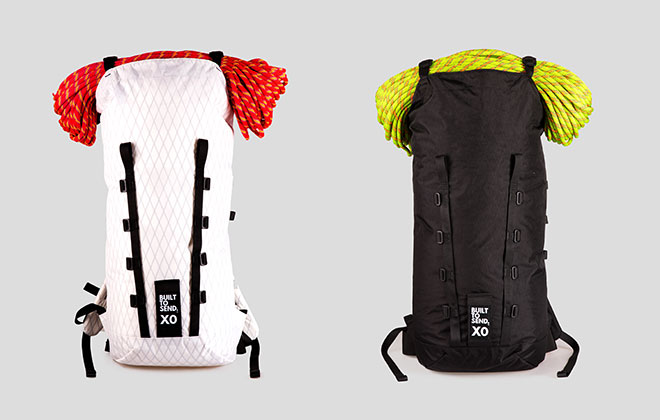
The straps are attached with custom aluminum hardware to make them almost unbreakable. A cleverly designed overload system solves the problem of finding extra equipment space on a ‘walk-in’. This allows you to extend the capacity of your pack when walking in from the trailhead to the start of a route, but then really compress the pack back down for the summit push.
You can really sense the pride and obvious passion that the Built To Send team has put into their work. With an emphasis on obsessive engineering, versatility, and an integrity of material this team of engineers and alpinists are producing some of the burliest, most honest bags on the market today. No Frills, all Function.
This article was written by new contributor, Bradley Woody; itinerant illustrator, minimalist, and long-time carry geek.
Enjoyed this article? You might like these too:
The Little-known World of Modern Bespoke Trunks and Cases





 Carry Awards
Carry Awards Insights
Insights Liking
Liking Projects
Projects Interviews
Interviews
